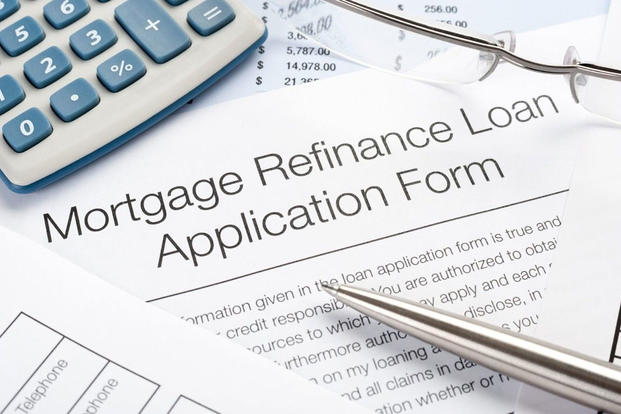During the past three to four years, mortgage interest rates have fallen to the lowest levels in history and homeowners are constantly barraged with ads telling them: “Refinance now!” It’s not surprising that some homeowners have become numb to the news that mortgage rates have dropped yet again. You may be one of them. You got a decent rate the last time you refinanced, so you figure it’s not worth the hassle to go through the mortgage application process one more time.
Considering that your mortgage is most likely your biggest debt, and the one that will take you the longest to pay off, it’s worth taking a look periodically to see if you can save money by refinancing again. After all, if you can shave just one-quarter percent off your interest rate, you most likely can also shave between 2 and 2.5 years off the life of your loan, provided you keep paying the same amount as you’re paying now.
According to CoreLogic, more than 70 percent of mortgages had interest rates above 4 percent in the fall. If you are one of them you may benefit financially from refinancing, given that the average interest rate on fixed, 30-year loans is currently 3.4 percent (plus closing costs).
Here are three ways to make serial refinancing work for you:
Don’t let closing costs drain your equity
This is the biggest potential trap for serial refinancers. Depending on where you live, closing costs -- appraisal, transfer tax, recording fee, etc. -- total about 1 percent to 2 percent of the loan amount. Many people get sold into refinancing with the pitch that they will pay “no money out of pocket.” Instead, closing costs get wrapped into the loan. In that case, you may not be paying out of pocket, but you are paying out of your equity.
That doesn’t mean that paying closing costs is always a bad idea. But before you do, you’ll want to run a “break-even” analysis to see how long it takes before your monthly savings outweigh the cost you paid to get them. The simple way to look at this is to take the difference between your current monthly principal and interest payment and the new monthly principal and interest payment, and divide the closing costs by that number.
Example: Your current monthly payment is $700 and the new monthly payment will be $650 for a savings of $50/month. Your closing costs are $1,000. 1,000 / 50 = 20. It will take you 20 months (almost two years) to break even on closing costs. In other words, you’re not really saving money until month 21.
That’s the simple way to look at it, but it won’t give you the complete picture. You’ll also need to compare your tax savings between your current payment and your new payment, and include that in your break-even calculation. Ask your loan officer to run you those numbers if you’re not sure how to figure that.
There is another option, though, and that’s a loan with no closing costs. Here’s how it works:
On any given day, investors (such as Fannie Mae, Freddie Mac, Wells Fargo, etc.) offer a variety of interest rates for various types of loans. Tables showing average mortgage rates, for example, will list a range of interest rates for 30-year fixed mortgages with different costs.
For instance, as of Jan. 22, an investor is offering a 3.5 percent 30-year fixed rate with zero points to the borrower, or 3.375 percent paying one point. (A point is 1 percent of the loan amount and it is the amount a borrower would pay, in addition to closing costs, to get that rate.) But going up the scale of rates, it’s possible to get money back from the investor. It’s called “premium.” So, today for example, an investor is also offering 3.75 percent with one point given back, which may be used as a credit toward closing costs.
With a true no-closing-cost loan, you use the money you get back from the investor to pay the closing costs. Therefore, nothing gets wrapped back into the loan and the homeowner doesn’t need to write a check at closing. We have clients who have refinanced every year for the past 10 years without ever paying closing costs.
Don’t Start Over
One of the dangers with serial refinancing is that each time you refinance, you can start over with a new 30-year loan, essentially pushing your debt-free date further into the future. There’s a very simple solution to that: just keep your payment the same after you refinance. Prepayment penalties on 30-year loans have disappeared, and loan servicers make it easy to pay extra toward your principal balance.
Just because you get a new 30-year loan doesn’t mean you have to take the full 30 years to pay it back. Your loan officer can run something called an “amortization schedule” to tell you what payment needs to be made to pay the loan off in any given length of time.
Of course, if you have higher-rate credit card debt, it probably makes sense to pay that off first. Or you may want to use your increased cash flow to put more toward your emergency fund or retirement savings. The choice is yours, depending on your financial situation and goals.
Refi Into a Shorter Term -- or Don’t
We are seeing quite a few borrowers taking advantage of low rates to refinance into a shorter term loan. Typically that means going from a 30-year fixed rate to a 15-year fixed rate, though there are 20- and 25-year loans available as well. You’ll get a lower rate if you take a shorter-term loan, but your payment will likely increase as well. That’s the tradeoff.
If you want the forced discipline of a higher payment, then a shorter-term loan may make sense. But sometimes it makes more sense to get a longer-term loan and then pay it off faster. You can always take a 30-year loan and, by paying extra, turn it into a 15- or 20-year loan. Then if something happens -- like you lose your job or your income takes a hit -- you will have the flexibility of a lower payment if you need it.
Will rates go lower again? It’s hard to predict what will happen this year. We may be at the low-end of the interest rate cycle. Or rates may approach 2% this year. Either way, if you are smart about serial refinancing you can take advantage of low rates when you can get them, and get out of debt faster.
Still Need More Information on Refinancing a VA Loan?
The first step in a purchase or refinance is to get rate quotes from multiple lenders. Often, your lender will then guide you through the rest of the process, from COE to closing.
--
Joseph Kelly manages the ArcLoan branch of Access National Mortgage in Reston,Va., with a team of loan officers committed to bringing cutting edge mortgage programs and education to the general public and real estate community. A graduate of the University of Virginia with a degree in Aerospace Engineering (yes… a rocket scientist), Joseph spent the first five years of his career as the youngest manager in a Fortune 500 computer company where he held positions in technical, sales and marketing.




